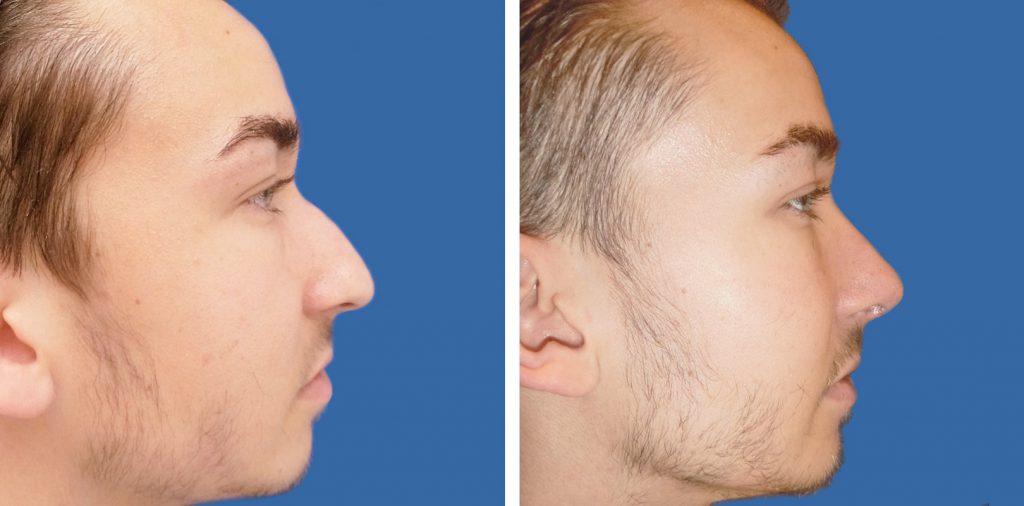I have just added some examples of rhinoplasty cases to the ‘Before & After’ section.

What is rhinoplasty?
Rhinoplasty is the term used to describe nose-reshaping operations. The aim of rhinoplasty is to improve the appearance of the nose delivering a natural, non-operated look that is well balanced with the rest of the face.
Who would benefit from rhinoplasty?
1. Cosmetic rhinoplasty. The desired appearance of the nose is very individual and culture-specific. Rhinoplasty can remove bumps, adjust length and width and improve tip definition and projection.
2. Rhinoplasty after broken nose. Rhinoplasty can straighten crooked noses, remove bumps and adjust abnormalities on the inside of the nose (septoplasty) that are the result of previous trauma, improving appearance and function.
3. Revision surgery. If you’ve already had a previous rhinoplasty and are unhappy with the result or would like some aspect adjusted, revision surgery may be appropriate.
The operation
Rhinoplasty is carried out under general anaesthesia. Incisions are well concealed on inside the nose and underneath the tip. The procedure takes around 2 hours. It is usual to stay overnight in hospital.
What to expect
A small splint is placed on the outside of the nose for 7 days. Some bruising occurs around the eyes, but usually subsides over 7-10 days. A more in depth discussion of the individual operative plan, risks and expectations will be covered over two pre-operative consultations.
What is liquid rhinoplasty?
Liquid rhinoplasty is a non-surgical treatment that changes the shape of the nose using injectable fillers. It is not as effective or long-lasting as surgical rhinoplasty but may improve the overall appearance of the nose by concealing humps, dips or depressions. This is a simple technique that can be done in outpatients.
Previous Post Next Post